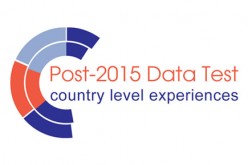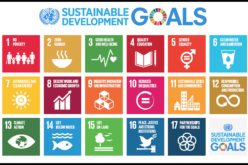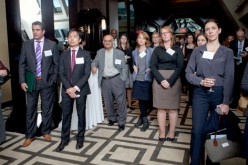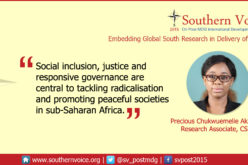‘Sustainability’ in the next development agenda: the case of energy access (Part 1)
This post has been written by Nihit Goyal, Sahil Ali and Shweta Srinivasan, researchers at CSTEP. They have recently launched a new paper – Sustainable Access for All: Building sustainability into universal energy access – part of the Southern Voice Initiative.
The much awaited High Level Panel’s (HLP) report on the post-2015 development agenda (HLP) was released last year, and around the same time the Sustainable Development Solutions Network (SDSN) prepared an Action Agenda for Sustainable Development, to inform the UN Secretary-General and the Open Working Group on Sustainable Development Goals (SDGs). In this context, we reviewed the objectives and emerging targets and indicators for the goal on energy in thepost-2015 dialogue from a southern perspective. It is our perspective that sustainability is not appropriately targeted in prominent proposals to date for a post-2015 goal related to energy.
Energy is key in achieving development
The lack of universal energy access has been a chronic problem in the developing world – many of the 1.7 billion people without access to electricity, and the 2.7 billion people without access to modern cooking fuels, reside in Sub-Saharan Africa and South Asia. Although the Millennium Development Goals (MDGs) did not include access to energy, subsequent work emphasizes its importance for human development. UN Energy highlights that energy services – lighting, heating, cooking, and mechanical power – are essential for alleviating poverty and achieving the MDGs. Access to energy plays a critical role in numerous other development objectives: improving quality of life, health, communication, education, and development outcomes for women. Deficient access also implies poor resilience to socio-economic and climate vulnerabilities.
Broadly, the energy goal aims to tackle the lack of energy access, whilst also addressing the concern on environmental sustainability associated with energy production and use.The goal of Sustainable Energy for All(SE4All) (identified by the UN Secretary General as a top priority in his five-year action agenda on SDGs), the goal on energy in the SDSN Group Action Agenda, and the UN HLP goal of securing sustainable energy, all resonate within this discourse. Amongst these, SE4All is the most comprehensive in its vision of universal electricity access, and proposes a multi-tier framework for tracking it. This framework aims at monitoring, at the household level, several challenges associated with access in developing countries – peak available capacity; affordability; duration; legality; and quality of supply; as well as access to electricity services on the basis of appliance ownership.
But is this enough?
Is measuring current access to electricity sufficient?
We argue that the next development agenda should look beyond access. The energy system, especially in developing countries, is exposed to several disruptions that can affect long-term continuity of access. Challenges include: resource constraints, climate change, natural disasters, and lack of capacity, all of which can have the biggest impact on those already at the higher levels of deprivation. To illustrate further, consider the following:
The issue of electricity access in India is often reduced to a discussion of on-grid versus off-grid – or decentralised – generation. As coal is a cheap fuel source, it proves to be an affordable solution for electricity access, particularly in areas which are close to the electricity grid. However, coal power generation emits greenhouse gases (GHGs) which contribute to climate change. A build-up of GHGs in the atmosphere can not only raise the mean temperature but also cause rainfall to become more erratic. A drought-like situation, which may ensue, would result in a higher electricity demand from both agriculture (for water pumping) and residential & commercial buildings (for cooling and air conditioning). At the same time, water scarcity can significantly reduce electricity generation from hydro power as well as thermal power (as seen in India in the summer of 2010). In the case of a shortfall between demand and supply, the vulnerable population may be denied energy access disproportionately – the 2012 blackout in India serves as an example.
Thus, we see that energy access can be quickly jeopardised by external factors. While the dimensions of energy access put forward in the SE4All tracking framework do help to determine the current level of access, they do not provide sufficient insight into the system’s ability to sustain that level of access. As a result, the post-MDGs dialogue does not seem to capture the sustainability of the development goal (in this case universal energy access) in its discourse on sustainable development. In this context, we find the Brundtland Commission’s definition of sustainable development limiting, and think that sustainability is more aptly defined as “long-term maintenance of system functions with respect to equity, well-being and environmental quality” (see Dynamic Sustainabilities).
Our next blog post will share our ideas on how to move forward.
1,276 total views, 1 views today








